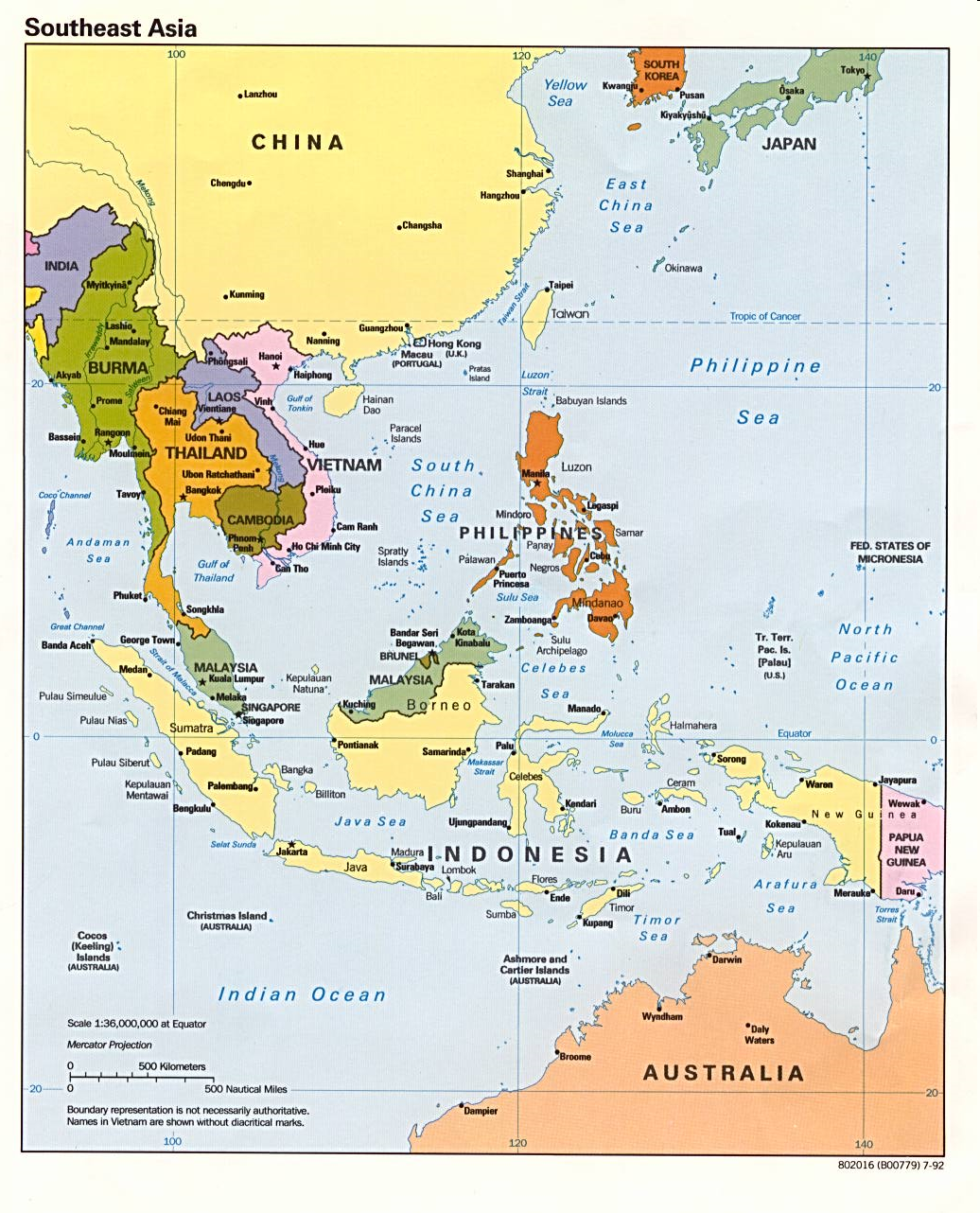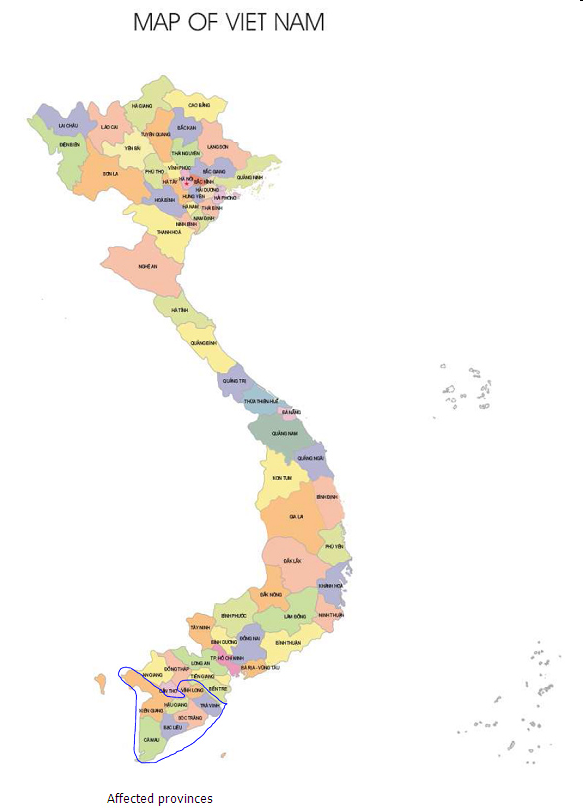Introduction
In the 1950s the United States involvement in Southeast Asia became more vigorous as the country offered military, financial and moral supports for different groups and countries in the region. As expected, the support offered by the United States generated repercussions in the country’s politics as various anti-war groups were formed in the country to discourage the country’s involvement.

Southeast Asia
Southeast Asia is a vast region covering an area of around a 4.1million square kilometers and is made up of several countries including Thailand, Burma, the Philippines, Indonesia, Singapore, Vietnam and Laos among others. It is part of the larger Asian region.
Vietnam
Vietnam is located in Southeast Asia and its stretch covers one area of Indochina. It is bordered by the South China Sea, China, Cambodia and Laos. The country is made up of two regions, which is the north and south, and was ruled by the French until the end of the Second World War which paved way for the French Indochina war involving the French and the Vietnamese, among other countries which were supporting different groups depending on their underlying agenda.
Following the end of the war and the failure of communism around 1991, most western countries, including those involved in the war such as the United States, restored trade and diplomatic associations with the country.
Why and How the United States became involved in the Politics of Southeast Asia in the 1950s
Vietnam is one of the countries in Southeast Asia that experienced the United States involvement in its politics in the 1950s
Some of the reasons that have been fronted as having led to the involvement of the United States in the country’s politics include the fight against communism and the need to support the United States’ long-time ally, the French, who were engaged in war with Vietnam.
According to Errington and McKercher (1990, p. 59), the United States had asserted its support for the French in their rule over Cambodia, Laos and Vietnam and when it came time to show their support they did so by offering both military and financial support.
In the years 1950-1954, the United States had provided financial support to France of more than 2.6 billion US Dollars in the form of military aid (.Hubbard, 2005. p. 104)
The Domino Theory in the 1950s
As part of the war against communism in Vietnam, the United States came up with a theory known as the Domino theory to show why they were against communism. According to the theory, if a country was allowed to be taken over by communists, then the next country would also be easily taken over and in no time, the whole region would be taken over and would be subject to the communist rule (Donaldson, 1996, p. 79).
The military support offered by the United States was not only in the form of armed soldiers, but also in the form of air support, tankers and other ground forces.
The United states involvement in the country’s politics was portrayed when they supported one of the leaders, Bao Dai, who was against communism, to fight against Ho Chi Minh, who even though was supported by communists, did not adhere to their form of rule.

European Centre for Disease Prevention and Control. (2005-2008). Map of Vietnam.
Thailand and the Philippines during the Indochina War
Thailand’s politics also experienced influence from the United States especially when it became evident that it would prove beneficial to the United States as far as the war in Vietnam was concerned.
Thailand thus became among the first Asian countries to offer their support to the westerners in their quest against communism. In return the country received military, technical and economic support from the United States.
The Philippines ‘ involvement in the Vietnam War was largely influenced by the United States thereby strengthening ties between the two countries. This association was by and large influenced by the Philippines ‘ strategic location, after which the country also received military and economic support from America.
With time, the Philippines association with the United States faded, especially at the end of the cold war.
Political Implications in the United States Resulting from its participation in Southeast Asia and cold War
The Resulting Political Climate in the United States During Its Involvement in the Southeast Asia and Cold War in the 1950s was that of dissatisfaction especially from the public following the large financial support that progressive governments had continued to invest in the wars yet there was continued defeat.
The United States also started experiencing economic problems as a direct result of the large financial investments it had made in the Vietnam war. The country had invested close to thirty billion US Dollars in the war and had sent more than five hundred thousand war military men to the region for the fifteen years during which the war lasted.
The politics of the foreign policy in the United States also changed shape, affecting areas such as anti-communist consensus that was previously held domestically, presidential powers which saw a decline as well as the national security infrastructure which also experienced declined support (Rosati, Hagan & Sampson, 1994, p. 248).
Conclusion
The Indochina French and Cold Wars had their implications in all the countries involved and while in some the wars led to close associations, in others it drove them further apart. The most affected areas in these countries were the political ties, economic associations and military support forums.
After the two wars, the different countries resorted to different means to recover and at some point, the ties between the different countries were renewed, such as was the case between the United States and Vietnam, and the Philippines and the rest of the Asian countries.
Reference List
- Bowie, A. & Unger, D. (1997). The Politics of Open Economies: Indonesia, Malaysia, the Philippines and Thailand. Cambridge: Cambridge University Press.
- Bradley, M. (2000). Imagining Vietnam and America: The Making of Post Colonial Vietnam, 1919-1950. North Carolina: The University of North Carolina Press.
- Chaloemtiarana, T. (2007). Thailand: The Politics of Despotic Paternalism. New York: Cornell Southeast Asia program Publications.
- Donaldson, G.A. (1996). America at War since 1945: Politics and Diplomacy in Korea, Vietnam and the Gulf War. Connecticut: praeger Publishers.
- Errington, J. E. & McKercher, J. C. (1990). The Vietnam War as History. New York: Praeger Publishers.
- Howard, A. (2007). Southeast Asia.
- Hubbard, C. (2005). Australian and US Military Cooperation: Fighting Common Enemies. England: Ashgate Publishing Limited.
- European Centre for disease Prevention and Control. (2005-2008). Map of Vietnam.
- Rosati, J. A. Hagan, J. D. & Sampson, M. W. (1994). Foreign Policy Restructuring: How Governments respond to Global Change. South Carolina: The University of south Carolina press.
- Yahuda, M. B. (2004). The International Politics of the Asia-Pacific. Oxford: Routledge Curzon Publishers.